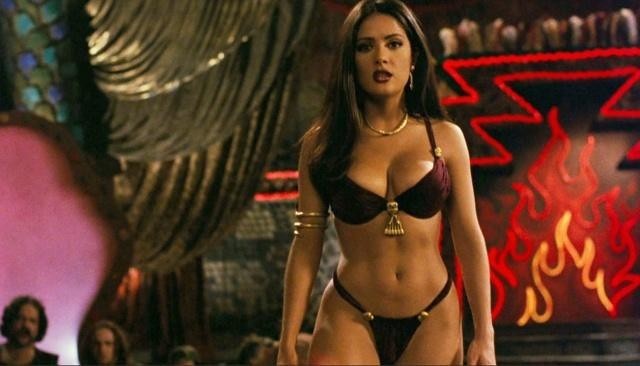Luke Owen reviews Console Wars: Sega, Nintendo, and the Battle That Defined a Generation by Blake Harris…
Of the many arguments and conversations had by school kids in the playground of the early nineties, ‘Sega vs. Nintendo?’ was one of the most hotly-contested. While Nintendo had the reputation and a library of amazing games like Super Mario World and The Legend of Zelda, Sega and their Genesis (or Mega Drive in the UK and Japan) had a cool, hip attitude that spoke to a generation who were looking to get to the “next level”. Blake J. Harris’s Console Wars: Sega, Nintendo, and the Battle That Defined a Generation takes a look at the rise of Sega after the employment of Tom Kalinske and the war that he waged to make the company the face of video games against the established house that Mario built.
As history is written by the victors, Sega have always been painted as the “bad guys” in the Console Wars due to their marketing campaigns like “Genesis Does What Nintendon’t” and the now infamous “Blast Processing” advert that pitted Sega’s Sonic against Mario Kart in a one-sided drag race. Console Wars however sets Sega up as the underdogs of the battle, a scrappy near-upstart company who took the controlling and manipulative Nintendo to town with their aggressive-yet-brilliant creative strategies to become the big fish in the pond. Sega may have started as the yappy pup who the older, bigger dog took no notice of, but the puppy got bigger and as it did, it looked like the “Old Yeller” had finally met its match. Nintendo are hardly portrayed as Nazis, but their control of the industry makes them instantly unlikeable.
And although Console Wars is a book based around fact, real people and (mostly) real-life scenarios and situations, Harris writes as if it was a work of fiction. In the opening of the book, Harris states that while it is based on a true story, he has altered locations, made up conversations and combined events to make the story flow. This does mean that Console Wars is not an entirely accurate portrayal of the most compelling time in video game history, but it does make for a more interesting read. You empathise with the “characters” and you learn to love them to the point where it can become a bit tearful. Harris’s portrays Kalinske as the hero of the story along with his Merry Men and Women and it makes you cheer their successes and mourn their loses.
A wonderful addition and decision by Harris is the underlying threat of Sony and their involvement with both Nintendo and Sega. Most people know of the history between the three companies, but it plays out so perfectly in Console Wars due to Harris’ writing style and pacing. Olaf Olafsson is presented as this really likeable and personable guy who just wanted Sony to be involved with the video game world but is constantly burned by the two market leaders before delivering the final blow to Sega and a making a huge impact on future Console Wars. Sony are the underlying factor in the book and those who know how the story finishes will love their ever present threat and how their empire was battled for and won.
But what is perhaps the most interesting aspect of Console Wars is that, while the battle between Sega and Nintendo is the main plot, there is a subplot of Sega of America vs. Sega of Japan. They’re portrayed as a jealous company who can’t make a dent in Nintendo’s hold on the Land of the Rising Sun while their American counterparts are revolutionising the way video games are marketed. They hate their constant requests for changes and hold up development with Sony and it makes the reader sympathise further with Kalinske and his team. It’s yet another brilliant play by Harris who knows just how to make Sega of Japan the “villain” while never outright saying they are or were.
Perhaps the only disappointment of the book is that it only covers Sega of America’s journey through the Genesis and doesn’t cover their eventual downfall with the release of the Saturn and the Dreamcast. However, with the way the story is written, it makes complete sense to start with Tom Kalinske’s hiring and end with his leaving. To then cover the years following the release of the Saturn in a post-Kalinske world would mean getting to know a new set of characters which would be counter-productive. But, as a fan who holds a special interest in the fall of Sega as well as someone who loved Harris’s style, Console Wars leaves you clamouring for more.
Console Wars: Sega, Nintendo, and the Battle That Defined a Generation is a wonderful and brilliant book that deserves, nay, needs to be read by anyone who took part in those school yard arguments of Sega vs. Nintendo. Even if you know of all the stories in the book (Sonic’s creation, Sonic 2sday, Nintendo double crossing Sony etc.), Harris still keeps you on your toes begging to find out what happens next. It may not be the most factually accurate book on the subject, but it’s a real page-turner you won’t be able to put down and is perhaps the most enthralling account of the early 90s console wars.
Console Wars is being turned into a documentary along with a feature-film adaptation by Seth Rogan and Evan Goldberg.
Luke Owen is the Deputy Editor of Flickering Myth and the host of the Flickering Myth Podcast. You can follow him on Twitter @LukeWritesStuff.










